It’s easy to see why Monstera have become a modern home essential. With their dramatic split leaves, bold tropical presence, and air-purifying abilities, these plants bring a natural, architectural beauty to any room. But the secret to thriving monsteras isn’t just sunlight and water, it’s understanding their jungle origins and creating an environment that mimics their natural habitat.
In this complete monstera plant care guide, you’ll learn everything you need to keep your Swiss-cheese plant healthy, happy, and thriving indoors, from the right soil mix and lighting to pruning, propagation, and troubleshooting common problems.
Table of Contents
What Is a Monstera?
Monsteras are tropical climbing plants native to the rainforests of Central and South America. They belong to the Araceae family, which also includes Philodendrons and Peace Lilies. The most popular houseplant variety is Monstera deliciosa, known for its large, glossy green leaves with natural holes or “fenestrations.”
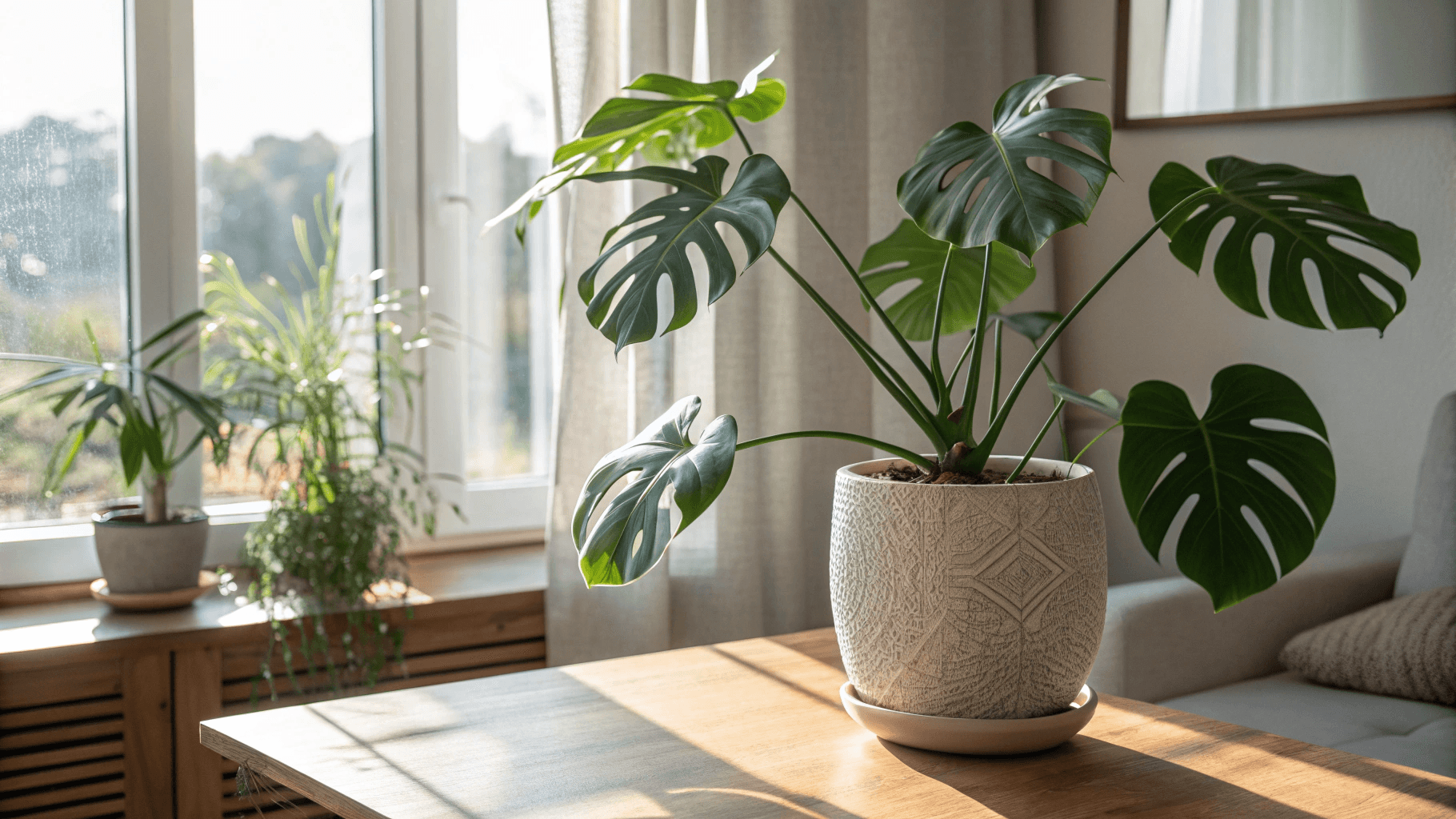
Those iconic holes aren’t just decorative in their natural habitat; they allow sunlight and rain to reach lower leaves and make the plant more resistant to strong winds. This adaptation helps Monstera climb tall rainforest trees while still capturing light efficiently.
Other common varieties include:
- Monstera adansonii (often called the “Swiss cheese vine”) – smaller, vining leaves with more frequent holes.
- Monstera albo variegata – prized for its creamy white variegation.
- Monstera obliqua – an ultra-rare species with delicate, lace-like leaves.
Each variety shares the same care principles but may differ slightly in growth habits and space requirements.
Basic Monstera Plant Care Requirements
Monsteras are relatively low-maintenance, but they do have preferences that reflect their tropical roots. Think bright light, moderate water, rich soil, and high humidity.
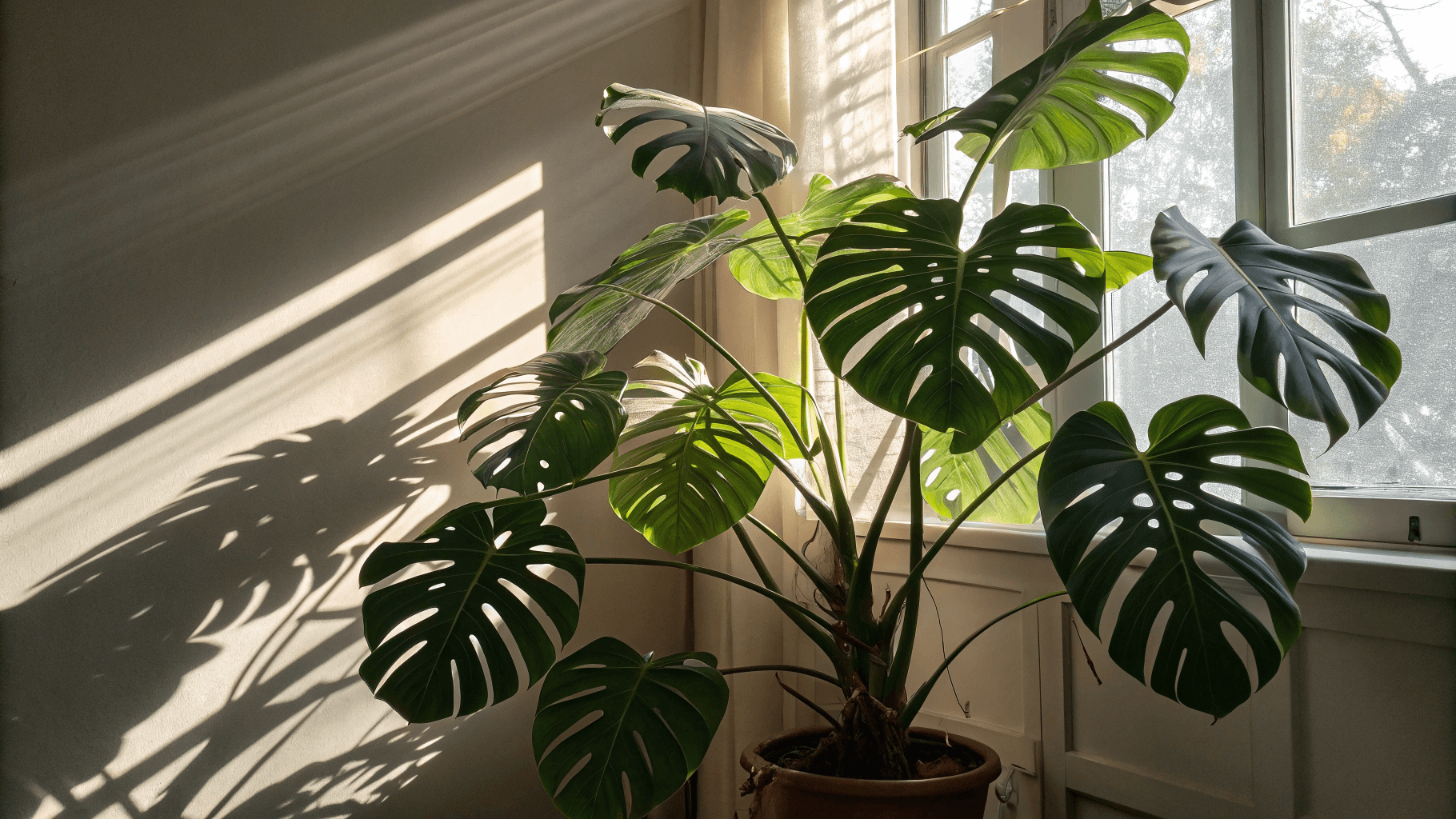
1. Light
Monstera love bright, indirect light similar to the dappled sunlight of their native jungles. A few hours of gentle morning sun is ideal, but harsh afternoon rays can scorch their leaves.
If your Monstera starts stretching or producing smaller, hole-free leaves, it’s a sign it needs more light.
TIP: Place your Monstera near an east- or north-facing window, or filter direct sun with a sheer curtain.
2. Water
Watering is where most Monstera owners make mistakes. These plants prefer deep but infrequent watering. Wait until the top 2 inches of soil feel dry before watering again.
Overwatering can lead to root rot, a common issue for Monstera. Always empty saucers after watering and use pots with drainage holes.
TIP: If your Monstera’s leaves droop slightly, it’s often just thirsty. Give it a deep drink and watch them perk up within hours.
3. Soil
Monstera thrive in aerated, well-draining soil rich in organic matter. The ideal mix is:
- 1 part potting soil
- 1 part perlite or orchid bark
- 1 part peat moss or coco coir
This blend allows air to reach the roots while retaining the moisture Monstera love.
4. Temperature & Humidity
Think tropical 65–85°F (18–29°C) with moderate humidity. Avoid cold drafts or sudden temperature drops.
For extra humidity, try:
- A humidifier nearby
- Grouping plants together
- Placing the pot on a pebble tray with water
If your Monstera’s leaf edges turn brown, it’s likely craving more humidity.
Monstera Propagation Overview

Propagating a Monstera is simple and rewarding. The most common method is stem cuttings in water or soil.
Here’s a quick overview:
- Cut just below a node (the small bump where roots and leaves emerge).
- Place the cutting in clean water or moist soil.
- Wait for roots about 2–4 inches long before potting into soil.
Keep your cutting in bright, indirect light and change the water weekly if rooting in a jar. In a few weeks, you’ll have a new baby Monstera!
How to Prune a Monstera
Pruning isn’t just about keeping your Monstera looking neat; it promotes healthy growth, encourages larger leaves, and can help control the plant’s size indoors.
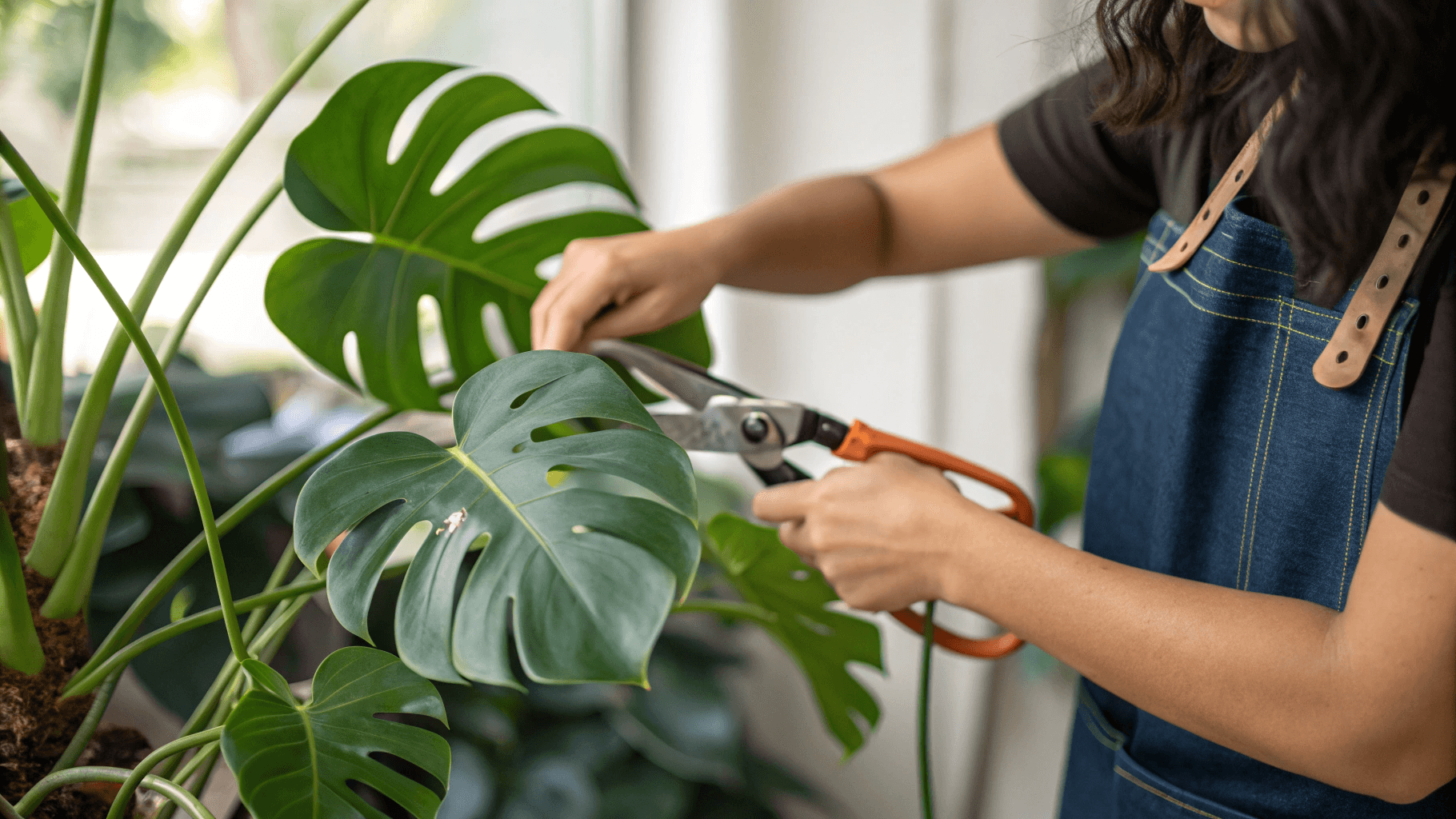
When to Prune
- Remove yellowing, damaged, or diseased leaves as soon as you notice them.
- Trim overly long vines if they’re crowding your space or not growing in your desired direction.
- Light pruning can be done year-round, but heavier pruning is best in spring or summer when the plant is actively growing.
How to Prune
- Use clean, sharp tools – Sterilize scissors or pruning shears with rubbing alcohol to prevent infection.
- Cut just above a node – Nodes are the bumps where aerial roots or leaves emerge. Cutting above them encourages new growth.
- Trim sparingly – Remove only what’s necessary to avoid shocking the plant.
Benefits of Pruning
- Promotes larger, more fenestrated leaves.
- Maintains the plant’s shape and prevents it from becoming leggy.
- Improves air circulation around the leaves, reducing the risk of pests and disease.
Tips for Encouraging Growth
- Combine pruning with occasional fertilization to boost new leaf production.
- Consider training long vines on a moss pole to promote climbing and healthier, bigger leaves.
Fertilizing Your Monstera
Monsteras benefit from regular feeding, especially during spring and summer when they’re actively growing. Fertilizer helps support lush foliage, encourages fenestrations (the iconic leaf holes), and keeps your plant vibrant.

Choosing the Right Fertilizer
- Balanced houseplant fertilizer (20-20-20) works well for all-around growth.
- Liquid fertilizer is easy to apply and allows you to adjust the dose as needed.
- Slow-release granules are convenient for long-term feeding but should be supplemented occasionally with liquid fertilizer during peak growth.
How Often to Fertilize
- During spring and summer: once every 4–6 weeks for slow-release, or every 2–4 weeks for liquid fertilizer.
- In fall and winter: reduce or stop fertilizing, as Monsteras enter a slower growth phase.
Application
- Always water your Monstera before fertilizing to avoid root burn.
- Avoid over-fertilizing, too much fertilizer can cause brown leaf tips or nutrient burn.
- Consider using a fertilizer high in nitrogen for lush green leaves or one with a balanced NPK ratio to support overall growth.
Style and Placement in Homes
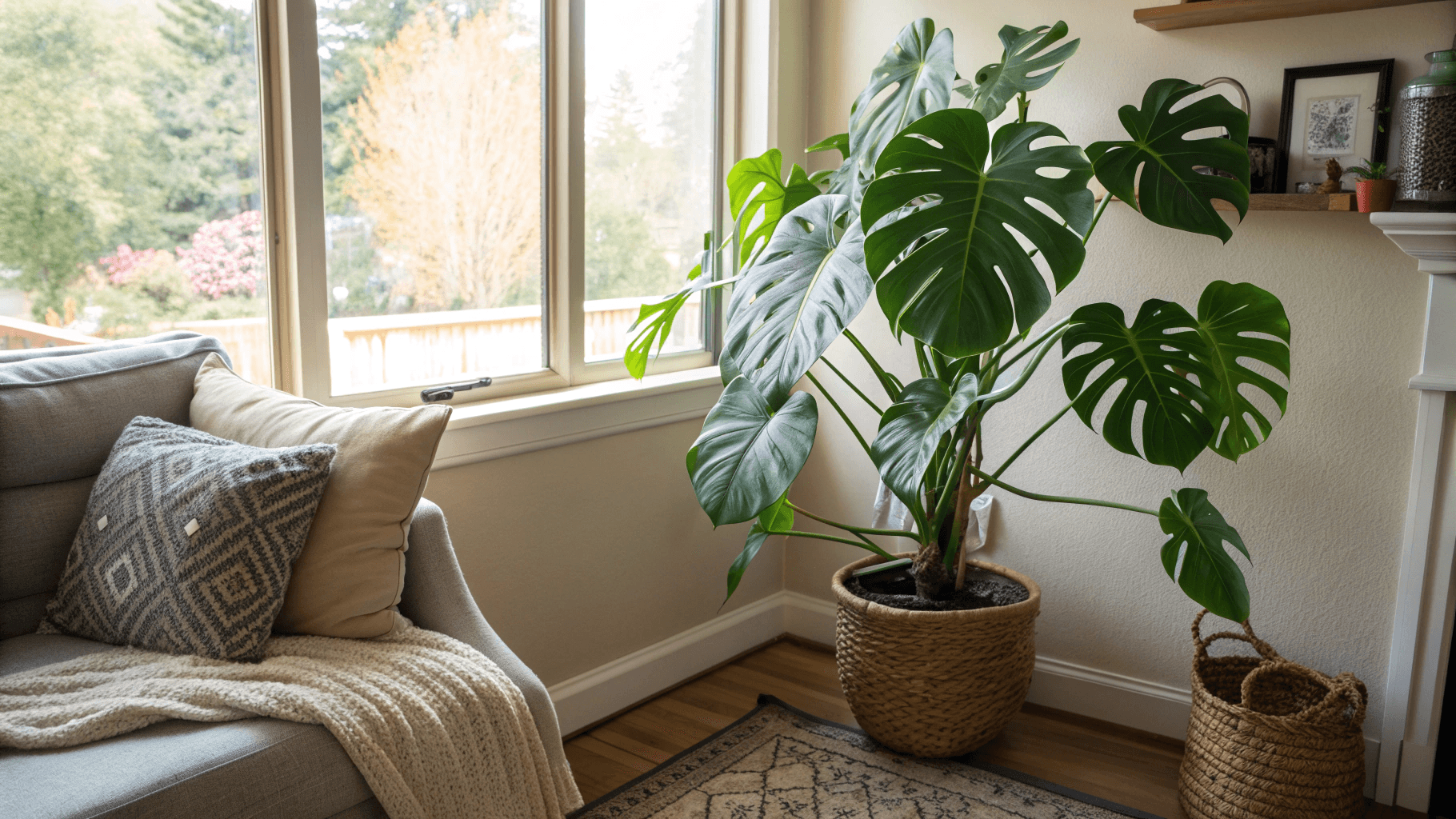
Monstera are statement plants; they bring structure, texture, and a touch of the tropics to any interior. Whether placed solo in a living room corner or part of a lush jungle cluster, they adapt beautifully to various decor styles.
Climbing vs. Trailing
In the wild, Monstera climb trees using their aerial roots. Indoors, you can encourage similar behavior with a moss pole or trellis. This helps the plant grow larger, more mature leaves with deeper fenestrations.
If you prefer a looser, cascading look, allow the vines to trail naturally from a hanging planter or a high shelf, ideal for Monstera adansonii.
Best Placement Ideas
- Living room: A tall Monstera deliciosa makes an elegant floor plant near a window.
- Bedroom: Smaller varieties add freshness and improve air quality.
- Office: A vining Monstera can soften modern furniture and reduce stress.
TIP: Pair your Monstera with woven baskets, ceramic planters, or minimalist pots to highlight its sculptural leaves.
Troubleshooting Common Monstera Problems
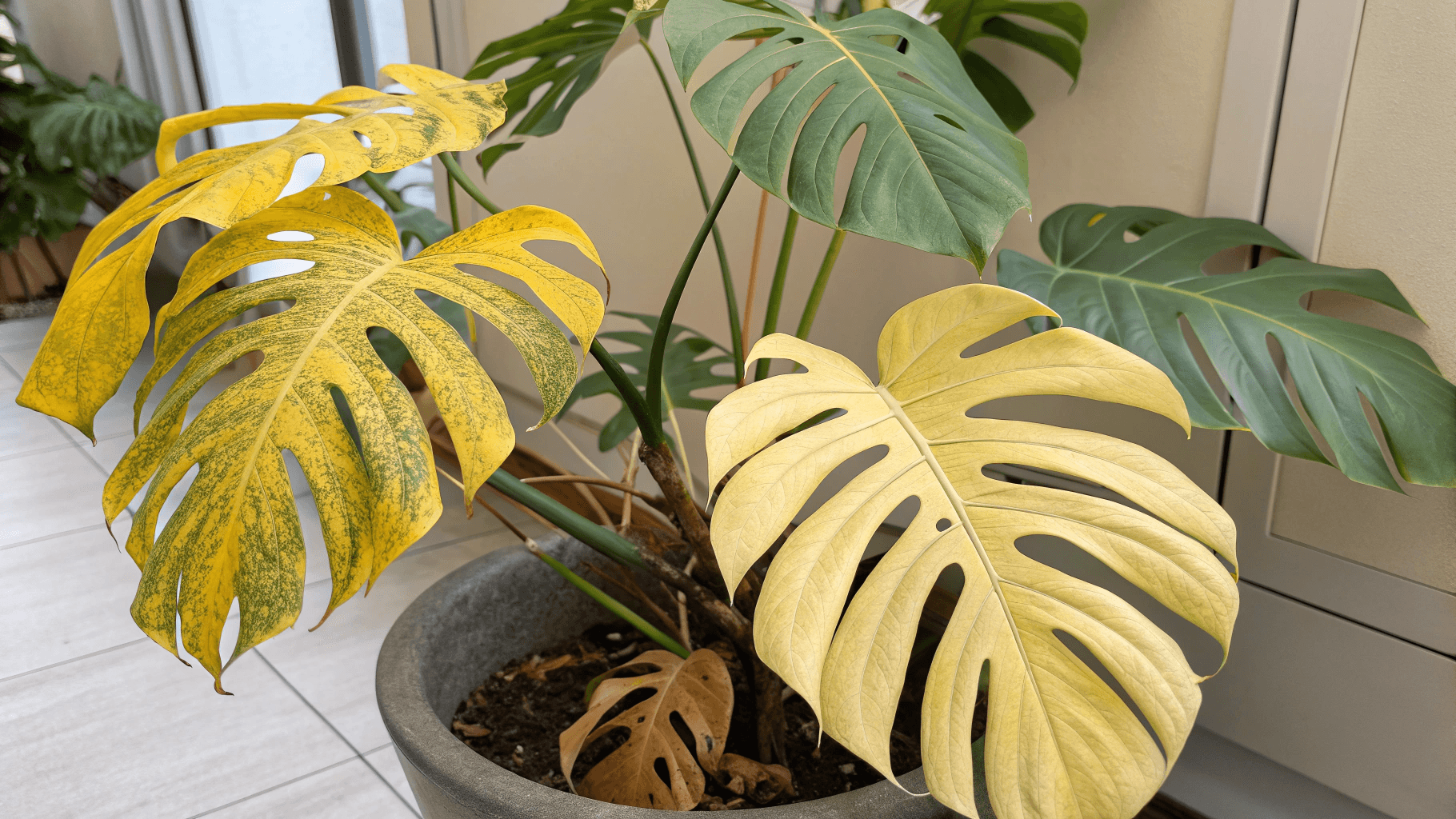
Even with good care, Monstera can occasionally show signs of stress. The key is to identify and correct issues early.
1. Yellow Leaves
Possible cause: Overwatering, poor drainage, or lack of nutrients.
Fix: Check for soggy soil and root rot. Adjust your watering schedule and ensure the pot drains freely.
2. Brown Leaf Tips
Possible cause: Low humidity or water quality.
Fix: Increase humidity and use filtered or rainwater if your tap water is heavily chlorinated.
3. Drooping Leaves
Possible cause: Thirsty plant or sudden environmental changes.
Fix: Water deeply and move away from cold drafts.
4. No Fenestrations (No Holes in Leaves)
Possible cause: Low light or young plant.
Fix: Give it more indirect light and patience; mature leaves develop splits naturally over time.
5. Pests (Spider Mites, Mealybugs, or Scale)
Fix: Wipe leaves with a damp cloth and treat infestations with insecticidal soap or neem oil. Regularly misting or showering your Monstera keeps pests away and maintains humidity.
Conclusion
Caring for a Monstera is as rewarding as it is simple once you understand its rhythm. With the right mix of light, moisture, and humidity, this tropical beauty will thrive for years, adding lush greenery and instant style to your home.
Remember, the key to healthy growth is consistency: water deeply, feed regularly, and let your Monstera stretch toward the light.

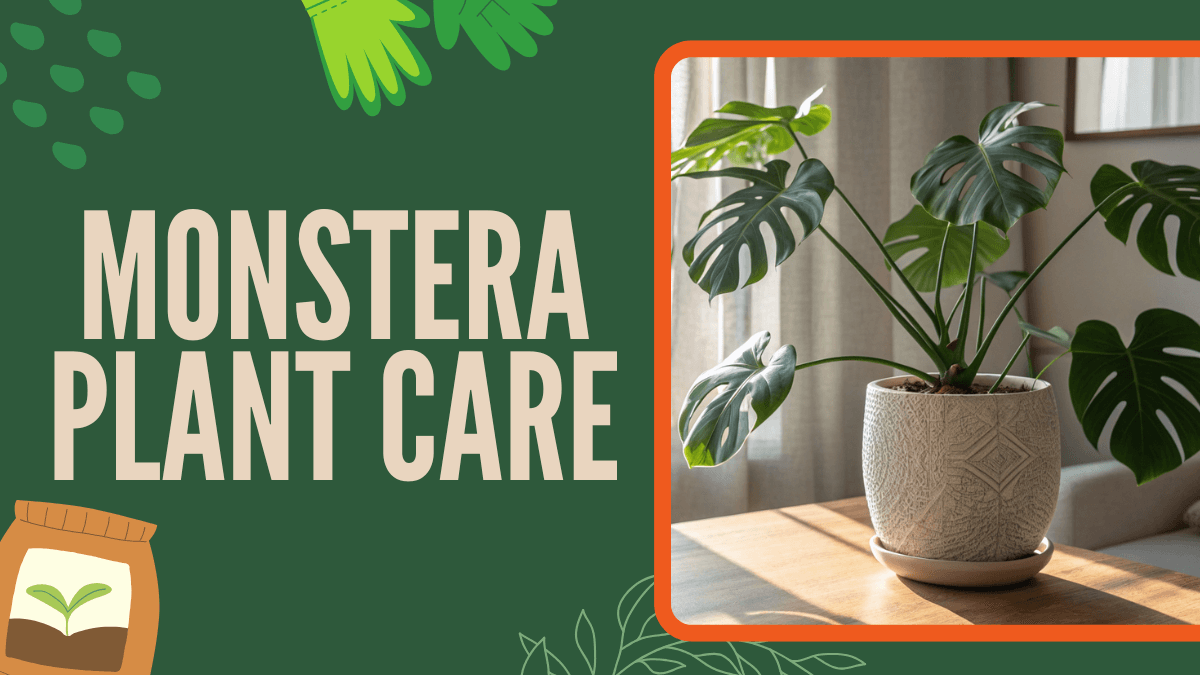
 ChatGPT
ChatGPT
 Perplexity
Perplexity
 Claude
Claude
Leave a Reply